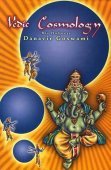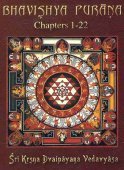Shakadvipa, Śākadvīpa, Shaka-dvipa: 8 definitions
Introduction:
Shakadvipa means something in Hinduism, Sanskrit. If you want to know the exact meaning, history, etymology or English translation of this term then check out the descriptions on this page. Add your comment or reference to a book if you want to contribute to this summary article.
The Sanskrit term Śākadvīpa can be transliterated into English as Sakadvipa or Shakadvipa, using the IAST transliteration scheme (?).
In Hinduism
Purana and Itihasa (epic history)
Source: Wisdom Library: Varāha-purāṇaŚākadvīpa (शाकद्वीप) is one of the seven islands (dvīpa), ruled over by Medhātithi, one of the ten sons of Priyavrata, according to the Varāhapurāṇa chapter 74. Priyavrata was a son of Svāyambhuva Manu, who was created by Brahmā, who was in turn created by Nārāyaṇa, the unknowable all-pervasive primordial being.
These are the seven major mountains in Śākadvīpa:
- Udaya,
- Jaladhāra (or, Candra),
- Śvetaka,
- Rajata (or, Śāka),
- Āmbikeya (or, Vibhrājasa),
- Kesarī.
- ?
These are seven main rivers situated there:
- Sukumārī,
- Kumārī,
- Nandā,
- Veṇikā,
- Dhenu,
- Ikṣumatī,
- Gabhasti.
The Varāhapurāṇa is categorised as a Mahāpurāṇa, and was originally composed of 24,000 metrical verses, possibly originating from before the 10th century. It is composed of two parts and Sūta is the main narrator.
Source: Google Books: Cultural History from the Vāyu PurānaŚākadvīpa (शाकद्वीप):—This dvīpa is twive in area to the Krauñcadvīpa and it encircles the Dadhimaṇḍodaka sea. The people here live a long life and there is no fear of famine, pestilence and old age for them.
The seven mountains in this dvīpa are as follows:
- Meru (or Udaya), extending towards the east;
- Jaladhāra;
- Raivataka;
- Śyāma;
- Asta;
- Āmbikeya (or Ambikāyā),
- Ramya (or Keśari).
The corresponding varṣas are:
- Jalada,
- Sukumāra,
- Kaumāra,
- Maṇīcaka,
- Kusumottara,
- Modāka
- and Mahādruma.
At the centre of this dvīpa is a great Śāka tree which is an object of worship. With it the Devas, Gandharvas, Siddhas and Cāraṇas sport.
The seven rivers in this dvīpa are:
- Sukumārī (or Anutaptā),
- Kumārī,
- Nandā,
- Śivetikā (or Śivenikā, or Tridivā),
- Ikṣu,
- Dhenukā
- (?).
These rivers have their own numerous tributaries which flow towards the region where the rains fall. There are many cities and prosperous janapadas in this dvīpa which is surrounded by the Kṣīroda sea. Here the varṇāśrama system works smoothly, the people being free from vices, such as, greed, anger, etc. Here taxation and laws do not exist.
Source: archive.org: Puranic EncyclopediaŚākadvīpa (शाकद्वीप).—One of the Saptadvīpas (seven islands). Sañjaya once gave Dhṛtarāṣṭra a description of this island. (Bhīṣma Parva, Chapter 11). Jambūdvīpa, Plakṣadvīpa, Śālmalidvīpa, Kuśadvīpa, Krauñcadvīpa, Śākadvīpa and Puṣkaradvīpa are the Saptadvīpas. (Devī Bhāgavata, 8th Skandha).
Source: Cologne Digital Sanskrit Dictionaries: The Purana IndexŚākadvīpa (शाकद्वीप).—Thirty-two lakhs of yojanas in extent and encircled by sea of curds (Dadhimaṇḍoda) (Kṣīroda, Viṣṇu-purāṇa) of equal dimension; takes its name from a great śāka tree; ruled by a son of Priyavrata, Medhātithi who divided it among his seven sons and retired to forest; here Vāyu is worshipped by Prāṇāyāma;1 divided into seven kingdoms bearing the respective names of the seven sons of the first king Havya (Bhavya, Viṣṇu-purāṇa), a grandson of Svāyambhuva; contains seven streams, several towns and villages; people here follow svadharma and varṇāśrama dharma;2 seven mountains;3 one of the seven continents, double the size of the Krauñcadvīpa; the four castes in it; Vangas, Magadhas, Mānasas and Mandagas; Viṣṇu stands in the form of Sūrya.4
- 1) Bhāgavata-purāṇa V. 20. 24-28.
- 2) Brahmāṇḍa-purāṇa II. 14. 13; 19. 27, 80-107; 21. 73; Vāyu-purāṇa 33. 13; 49. 74; 50. 127.
- 3) Matsya-purāṇa 122. 1.
- 4) Viṣṇu-purāṇa II. 1. 14; 2. 5; IV. 58. 71.

The Purana (पुराण, purāṇas) refers to Sanskrit literature preserving ancient India’s vast cultural history, including historical legends, religious ceremonies, various arts and sciences. The eighteen mahapuranas total over 400,000 shlokas (metrical couplets) and date to at least several centuries BCE.
Kavya (poetry)
Source: Shodhganga: A critical appreciation of soddhalas udayasundarikathaŚākadvīpa (शाकद्वीप).—One of the seven continents (dvīpa) of Bhūrloka (earth).—The Śākadvīpa possesses the mountain named, Śāka (see Matsya-purāṇa 123.1-64). The Śākadvīpa is encircled by an ocean (samudra) of milk.

Kavya (काव्य, kavya) refers to Sanskrit poetry, a popular ancient Indian tradition of literature. There have been many Sanskrit poets over the ages, hailing from ancient India and beyond. This topic includes mahakavya, or ‘epic poetry’ and natya, or ‘dramatic poetry’.
Shaivism (Shaiva philosophy)
Source: Wisdom Library: ŚaivismŚākadvīpa (शाकद्वीप) refers to one of the seven continents (saptadvīpa) situated within the world of the earth (pṛthivī), according to Parākhyatantra 5.61. It is also known as plainly Śāka. These continents are located above the seven pātālas and may contain even more sub-continents within them, are round in shape, and are encircled within seven concentric oceans.
According to the Parākhya-tantra, “outside that is the continent Śāka, where the great Śāka tree stands. Because of its length a band was put about it by Indra. Beyond that is the ocean called ‘Milk’, in which there is pure milk. This ocean was drunk from by Upamanyu as much as he wished”.
The Parākhyatantra is an old Śaiva-siddhānta tantra dating from before the 10th century.

Shaiva (शैव, śaiva) or Shaivism (śaivism) represents a tradition of Hinduism worshiping Shiva as the supreme being. Closely related to Shaktism, Shaiva literature includes a range of scriptures, including Tantras, while the root of this tradition may be traced back to the ancient Vedas.
Languages of India and abroad
Sanskrit dictionary
Source: Cologne Digital Sanskrit Dictionaries: Monier-Williams Sanskrit-English DictionaryŚākadvīpa (शाकद्वीप):—[=śāka-dvīpa] [from śāka] m. Name of a Dvīpa (See above).
[Sanskrit to German]
Sanskrit, also spelled संस्कृतम् (saṃskṛtam), is an ancient language of India commonly seen as the grandmother of the Indo-European language family (even English!). Closely allied with Prakrit and Pali, Sanskrit is more exhaustive in both grammar and terms and has the most extensive collection of literature in the world, greatly surpassing its sister-languages Greek and Latin.
See also (Relevant definitions)
Partial matches: Shaka, Dvipa, Caka.
Query error!
Full-text (+100): Nijadhriti, Danavrata, Jaladhara, Jalada, Magasa, Citrarepha, Ritavrata, Mandaga, Manga, Ambikeya, Dhumranika, Manicaka, Saptadvipa, Urushringa, Ayurda, Keshari, Shaka, Balabhadra, Maga, Jaladavarsha.
Relevant text
Search found 34 books and stories containing Shakadvipa, Saka-dvipa, Śāka-dvīpa, Śākadvīpa, Sakadvipa, Shaka-dvipa; (plurals include: Shakadvipas, dvipas, dvīpas, Śākadvīpas, Sakadvipas). You can also click to the full overview containing English textual excerpts. Below are direct links for the most relevant articles:
The Sun-Worshipping Sakadvipiya Brahmanas (by Martina Palladino)
3. The Other Purāṇas and the Mahābhārata < [Chapter 1 - The Purāṇic Sections]
1. Epigraphic Evidence < [Chapter 4 - Some Reflections on the Śākadvīpīya Presence in India]
3. The Historical Problem < [Chapter 4 - Some Reflections on the Śākadvīpīya Presence in India]
Agni Purana (by N. Gangadharan)
Skanda Purana (by G. V. Tagare)
Chapter 37 - Bhuvanakośa: Evolution of the Universe < [Section 2 - Kaumārikā-khaṇḍa]
Chapter 14 - The Greatness of Catussamudra < [Section 1 - Avantīkṣetra-māhātmya]
Chapter 13 - Origin of Arkasthala < [Section 1 - Prabhāsa-kṣetra-māhātmya]
Brahmanda Purana (by G.V. Tagare)
Chapter 14 - The race of Priyavrata < [Section 2 - Anuṣaṅga-pāda]
Chapter 19 - Description of Plakṣa and other continents (dvīpa) < [Section 2 - Anuṣaṅga-pāda]
Chapter 21 - Description of the solar system < [Section 2 - Anuṣaṅga-pāda]
Brahma Purana (critical study) (by Surabhi H. Trivedi)
7. The area of Sakadvipa < [Chapter 9 - Geography]
4. Varna system (d): Sudras < [Social Structure]
4. Varna system (c): Vaisyas < [Social Structure]
Vishnu Purana (by Horace Hayman Wilson)
Related products


